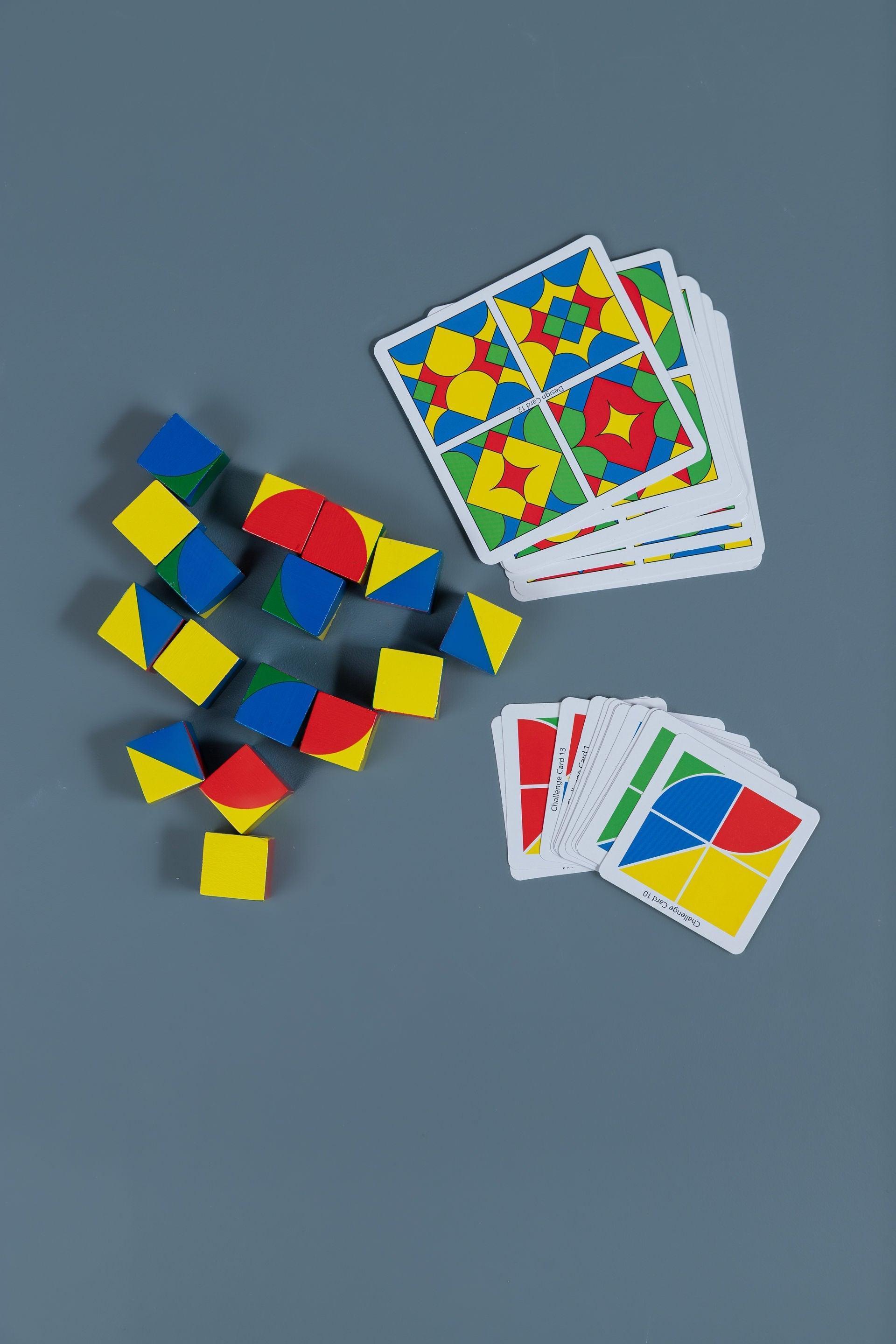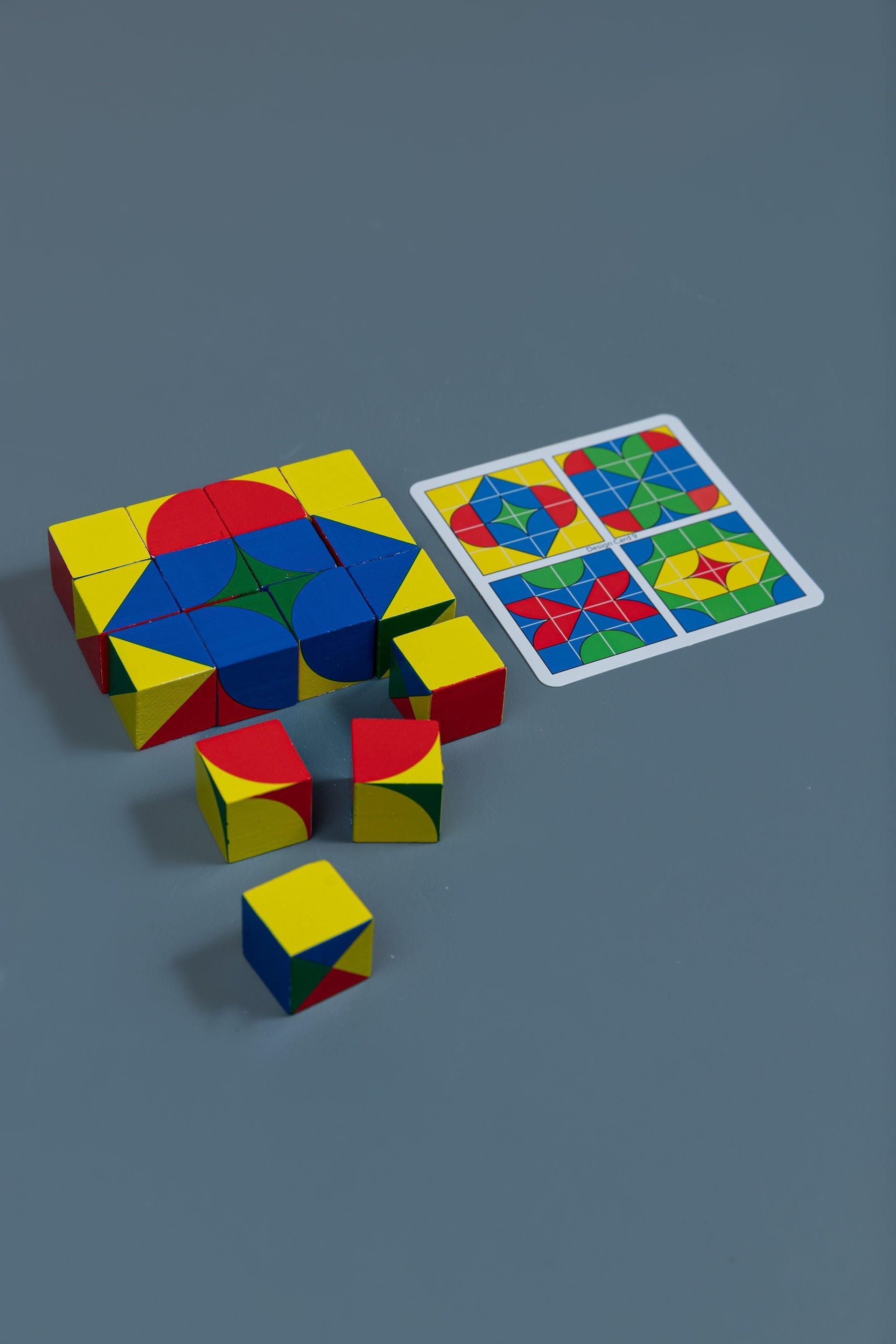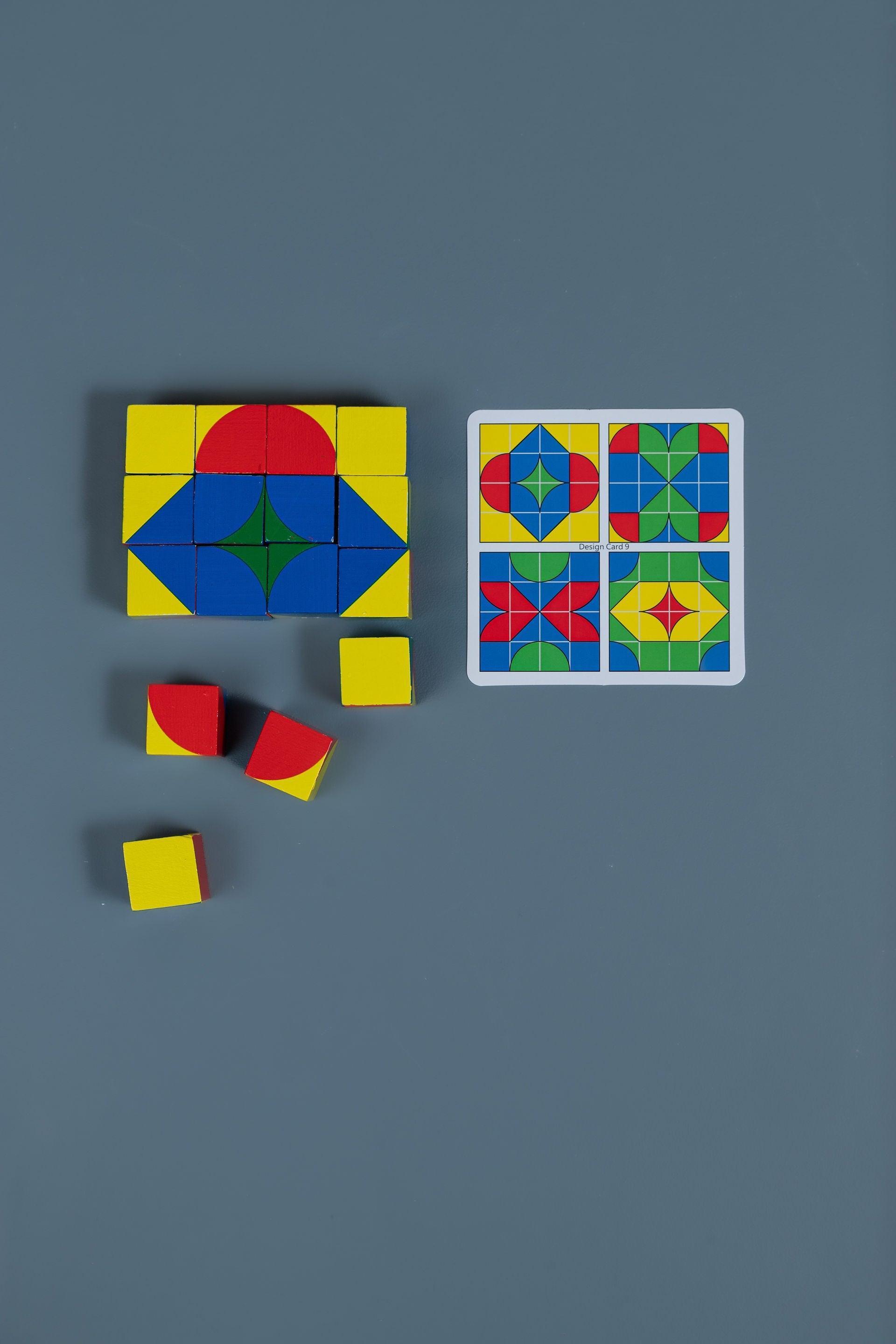Pixy Cubes
These colourful Pixy Cubes are solid and each side of the cube has a different design or pattern combination.
The game includes 4-cube designs printed on a grid, 16-cube designs printed on a grid, and 16-cube designs not printed on a grid. You can grade the activity by using the cards in that order. By the time you get to the 16 cube side with no grid, you will have to be able to mentally separate the squares. This requires critical thinking and problem solving skills.
Features:
- 16 x (2x2 cm) cubes with design patterns
- 1 booklet with games and instructions
- 12 challenge cards
- 19 design cards
What our OT says:
An OT favourite, puzzle like game that is really well received by children in therapy.
- Separate and sort the cubes to the correct sides for the child if you want to decrease the difficulty or concentrate on another aspect, like spatially orienting.
- Ask the child to turn one cube at a time in their fingers and using only one hand let them find the correct side of each cube for placement.
- Study a 4 cube design, then turn it over and build it from memory.
- To make the copying of the design easier, cover all but the line you are working on. If the child gets stuck, cover the whole design except the one cube.
- Place the cubes for a design on the table so that the wrong side is up, requiring the child to pick up and rotate each cube in-hand.
- Place a cube in the child’s palm. Ask them to bring it to the fingertips and rotate for placement using only that hand. This is a great activity for in-hand manipulation.
- Clean up by picking up one cube at a time and holding it in the palm. How many can you hold without dropping any? Try adding one more.
There are so many developmental components that are supported by pixy cubes: in-hand manipulation, distal finger control, fine motor precision, visual discrimination, visual memory, figure ground, spatial relations, visual closure, visual form constancy, sequencing, executive functioning skills.





















